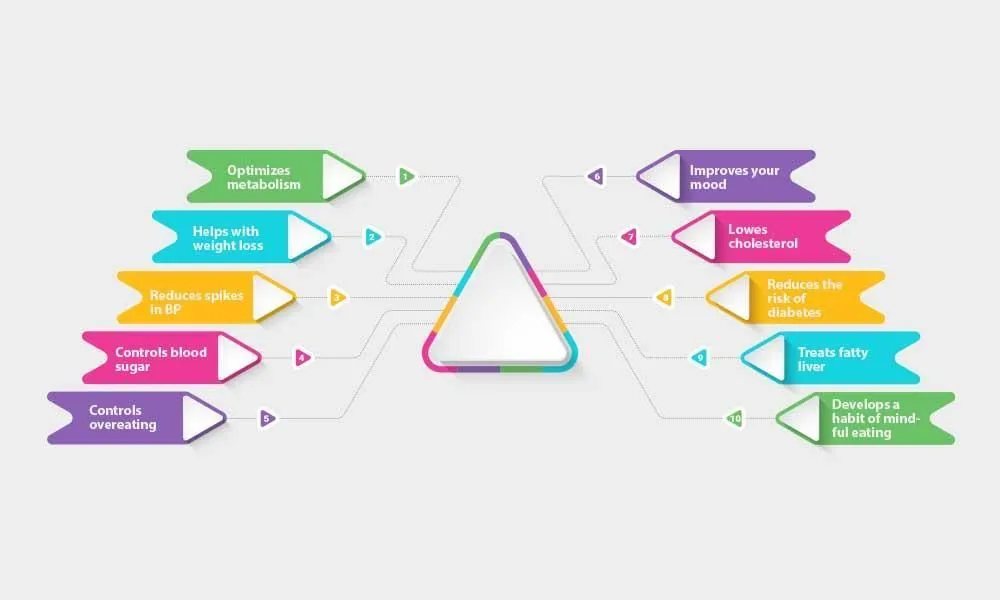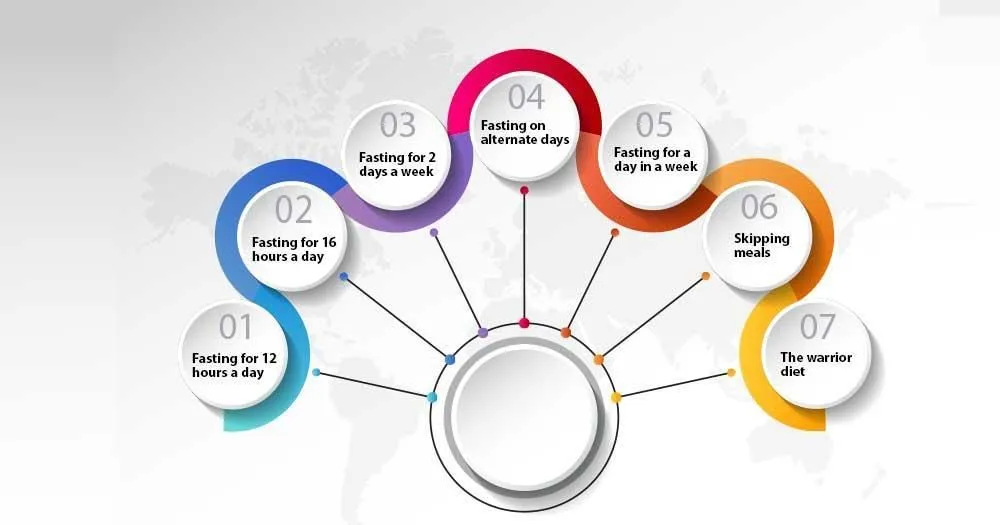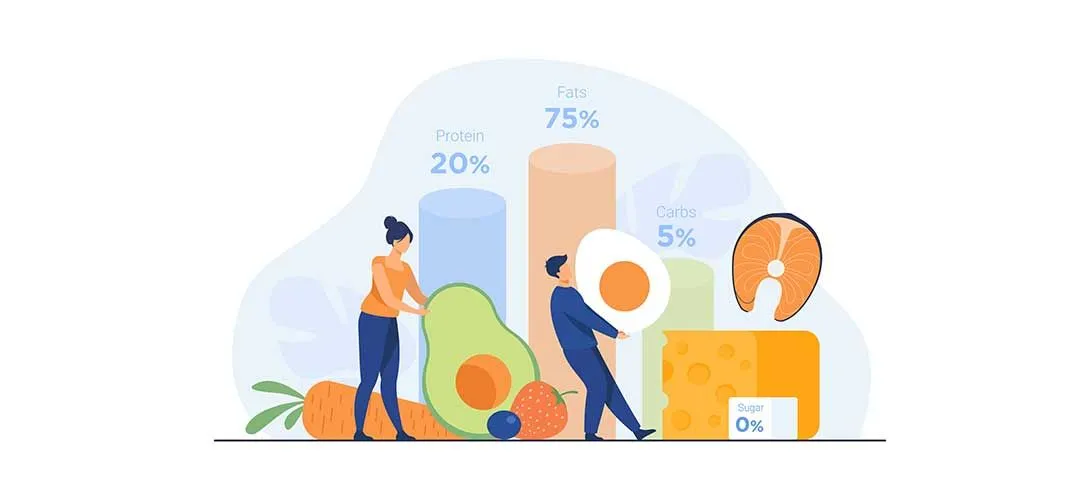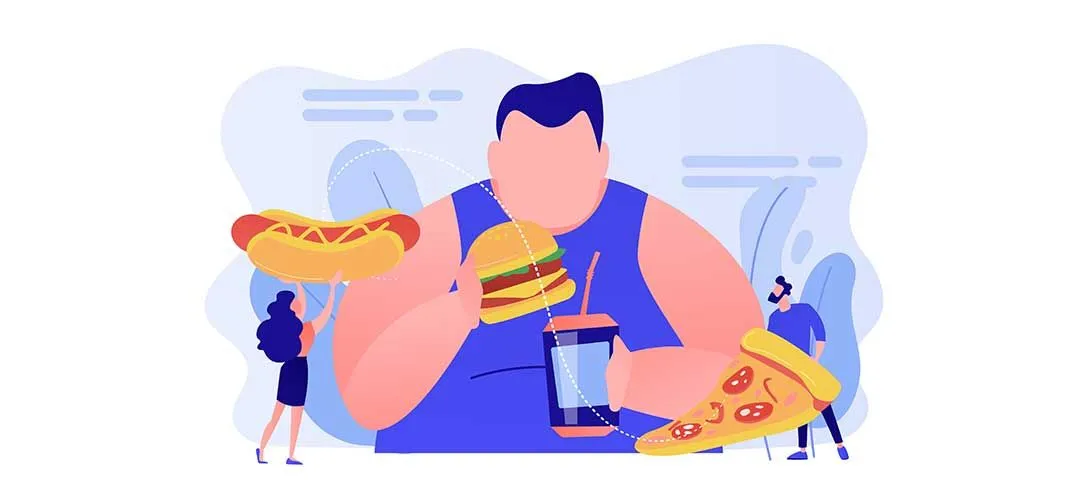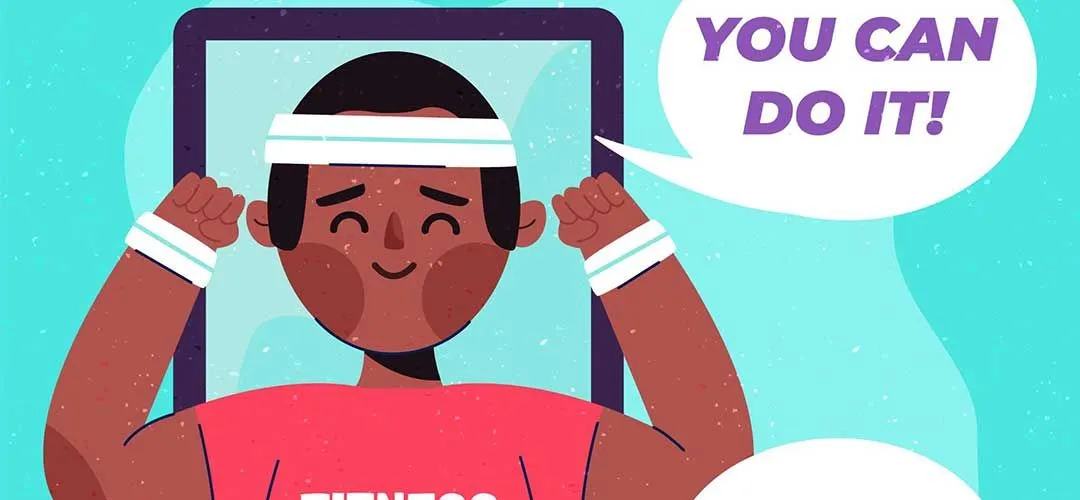Working out is an excellent way to get in shape faster. However, we can neither work for more than two hours at a stretch nor can we exercise seven days a week. We also indulge in binge eating, thus devouring on foods that we probably shouldn’t eat on a fitness diet. So what can we do to have better fitness? The answer is by restricting our energy intake, a process called intermittent fasting and following a smarter fitness schedule.
Intermittent fasting refers to the practice of selectively staying on a restricted diet to contain the bad effects of binge eating and other aspects of an indulgent lifestyle. It can help the dbody detox in a faster and efficient manner, and can thus take the load off the liver and kidneys.
You should talk to your doctor before making any changes to your diet. Some people mistake this restrictive eating habit for not eating or eating very little for long periods, such as 14 to 36 hours. This is both inappropriate and incorrect, and can cause serious health issues.
Also known as intermittent energy restriction, the habit of eating in a controlled amount and at certain time intervals can offer many health benefits. The key is to be patient with the process and not give in to temptations. Here’s what else you can stand to win with intermittent fasting:
1. Optimizes metabolism
2. Helps with weight loss
3. Reduces spikes in BP
4. Controls blood sugar
5. Controls overeating
6. Improves your mood
7. Lowes cholesterol
8. Reduces the risk of diabetes
9. Treats fatty liver
10. Develops a habit of mindful eating
You may note that it would take you some time to see visible results. For most people, this time is around 15 days or more.
It refers to developing a pattern of eating in moderation and at certain times. One is advised to eat as per regular and short time intervals to eat less and burn more calories. As the body switches to energy-saving mode, it starts using up the stored fat reserves, thus increasing the rate of metabolism. This translates into a better and linear weight loss experience.
There are seven types of intermittent fasting methods:
One fasts for 12 hours a day. This would make the body turn towards its fat reserves and start melting body fat for energy, thus reducing your flab.
The same as above, except that one fasts for 16 hours. One may eat in the next 8 hours but we recommend that you do not overeat.
If you are looking for the simplest route, you can try eating protein-based food five days a week and then reduce the intake for 2 days.
If you think you are okay with eating in party mode one day and in moderation the other day, you may try this fasting method.
This fasting plan is also called Eat-Stop-Eat and is meant for beginners. It simply means that you do not eat anything a day in a week. You may have a liquid diet of tea, fruit juices, and milk if you want.
It simply means that you may not eat something for breakfast, lunch, or dinner. We ask that you try this when you are not cooking your favorite meals.
Meant only for experts and not beginners. You may eat raw fruits and vegetables for 20 hours (including sleep) and then eat only one high-calorie (fats and proteins) diet in the remaining four hours.
One may note that the practice of selectively skipping meals may not suit everyone, especially those who are pregnant or have any health conditions. We recommend checking with a healthcare specialist to know what you may eat and not eat during this period.
Since you may not eat too often and in large amounts, it is important to note that you should eat something that is high in energy and nutrition so you could stay up for long. Here are some suggestions:
1. Nuts
2. Fruits
3. Milk and dairy products
4. Meat
5. Fish
6. Tofu
7. Soya beans
8. Brown rice
9. Sweet potatoes
10. Peas
11. Lentils
12. Greek yogurt
It is just as important to stay away from processed foods and drinks, sugar, canned foods, refined starch, and foods rich in yeast or preservatives. They can cause indigestion and spikes in blood sugar levels, something you won’t like.
Reducing your calorie intake by 30% to 40% might help you shed some flab, especially on your lower body. Limiting food intake means that you consume fewer health nasties such as sugar and trans-fat and you lose weight, both of which help you stay away from some common illnesses like diabetes and blood pressure.
Fasting at regular intervals may also increase your body’s insulin sensitivity, thus helping you control your cravings and hunger better. As a caution, we advise that you consult a professional dietitian or nutritionist online before starting with your first fast- and here’s a link to help you do that.
Intermittent fasting (or intermittent energy restriction) isn’t a diet or a fad. It is a specially derived eating pattern designed to help you achieve faster metabolism so you could reach your specific health and fitness goals.
Here are some easy rules that you can remember:
This pattern is great for those who want to build muscle and lose fat. It comes with some simple guidelines such as 14 hours of fasting for women and 16 hours for men every day, followed by an eight- to ten-hour window to eat as per wish.
Although you’re not supposed to consume any calories during the fasting period, you may take water, black coffee, sugar-free, and calorie-free sweeteners. You should fast through the night and break your fast 6 hours after waking up.
This stage is designed to promote fat burning and boost your energy levels. The overeating, 4-hour window, involves eating in the night to help the body repair itself, recuperate and relax. While eating, be sure to start your meal with vegetables, protein, and fat and keep carbs for last so that you can have them only if you’re not full.
You’re expected to fast for 24 hours, once or twice a week with this method. You’re allowed to drink calorie-free drinks such as water, green tea, and black coffee while fasting. After you break your fast, you can return to normal eating. This diet allows you to lose weight through a calorie deficit without limiting your food options.
PS: Making buttermilk and lentils an integral part of your diet can also create a huge impact on your fitness. They would also help you lose weight faster and keep you ahead of your dietary requirements, especially for minerals like calcium and iron.
Jumping to a fasting stage from your normal routine can be quite a shock to your system. It could be a concern for people with blood sugar problems, diabetes, or hypoglycemia. We advise that such people consult a doctor before making any changes to their diet plans.
Here are some issues that you might face with intermittent energy restriction:
Reduced calorie intake
Weakness
Lack of focus
Mood swings
Hunger
Overeating
Feeling of guilt
However, with time and consistency, you shall adapt to these changes and learn to function optimally without food.
Festive season equates to a time of happiness and we match it up with eating. Psychologists say that we tend to eat more when we are happy with ourselves and those around us. Most of us celebrate it by eating a little too much for our liking and then end up paying for it with a weakened digestive system and depleted fitness levels.
This habit is called Binge Eating Disorder. It can be best treated by exercising self-restraint and eating in moderation to stay fit. When with friends, you can even aim for losing weight by working out or doing meditation. You may consult a nutritionist for the best results.
You can also turn your routine tasks and activities into calorie-burning opportunities without spending hours in the gym. Simple activities like car-washing and walking briskly can help you lose weight faster. As per a rule, you would need at least two hours of aerobic activity and muscle-strengthening activities on two or more days per week to get the job done.
Tip: Here’s a daily calories burn calculator you can use for your Android phone.
Every minute when you’re not lounging on the couch is a positive step towards weight loss, be it shopping or daily household tasks. It means that most of your daily activities- be it cleaning, cooking, or going to the laundry room- act in the same manner as working out in a gym to a large extent.
The key is to simply turn off the auto mode and handle the daily tasks with a little more intensity, energy, and speed and let the burnout boost sneak in. Here’s a sample action plan:
Engaging yourself in house-cleaning activities like sweeping or vacuuming is a good way to burn about 150 kcal/hour. So now get the dual benefit of cleaning your house and burning a few extra calories. Pick up your laundry basket and keep twisting the torso for a quick oblique workout.
You get dirty when you lunge forward to pick fresh tomatoes from your garden, but you do leave behind a huge number of calories when you get up. A few hours of gardening can burn about 800 calories besides giving you the pleasure of eating fresh fruits!
Whether it is your regular grocery shopping or a new LBD you want to purchase, shopping indirectly means walking-it burns about 240 to 300 calories per hour. Want to take it a level higher? Park away from the mall entrance and say no to lifts and take the stairs to burn more calories every single minute.
Even shining your family vehicle could be a fun way to work out. Cleaning your car with soap, a bucket of water, a sponge, and a hose will burn about 120 calories in 30 mins. Persisting with this task even two days a week can give you a leaner and fitter body, and a shiny car- isn’t that great?
Use the push mower for mowing your lawn and you can shed about 350-380 calories. Also, if you spend some more time raking up the grass clippings, you are likely to burn 150 calories as a bonus. We recommend you check out a few YouTube videos to know how to do it in a better way.
PS: Rules you can break and still lose weight, even during holidays!
Don’t get bored while sitting in classes or at your work desk, rather work for improving your body. Put your shoulder muscles at work by crunching time towards the ear. You could also tighten the core and squeeze the butt which is a great way to begin muscle toning.
Everybody knows that sitting idle is bad for health and waistline. Replacing sitting with standing will help you burn more calories. While it may not directly contribute to losing some extra flab, it would prove helpful when you are trying to maintain weight.
Some of the options you might be able to get up off your butt during the day are train rides, staff meetings, answering a phone call, watching TV, etc. Another way to stay fit and in shape is to dance, though you should not start doing it at your workplace without prior approval!
Don’t worry, because there’s more in store after you finish all your daily tasks. Just tuck yourself in bed to spend some cozy time with your special person and you can still burn calories. A vigorous 30-minute smooching session will help you burn about 30-50 calories!
Our body simply responds to what we are putting in it daily. This includes moments of binge eating too- and these careless moments often return with detrimental effects on our fitness, even if it is for some time.
Consulting a fitness professional online or a dietitian virtually can help you get the best of both worlds because these experts can help you see things in more health-centric terms. They are also the best people to seek some quality guidance for making important changes that can affect your well-being.
Alternatively, if you are an experienced personal trainer, you can use a software-based approach to reach out to new and existing clients, right from your smartphone. You may offer live training sessions using audio or video conferencing, and choose to be available in the times you have given an appointment. You can get started with a free one-month trial to know the benefits.
We understand that daily activities would never replace your workouts nor would intermittent fasting be a replacement to your dietary practices. However, these two methods can offer you better results over time. This is because the human body and psyche are made to sense and appreciate any positive change in its regular functioning, and they would reciprocate just as nicely.
The key is to maintain a proper balance between the daily and routine activities and to match them up with those suggested by your fitness expert. Fasting is a good way to lose weight but it should only be used as a second option because it may have some serious downsides, especially if done improperly.
